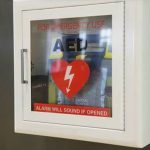Nursing education is continually evolving to meet healthcare's ever-changing demands. In recent years, several trends have emerged that are shaping the future of nursing education. Looking ahead, it's clear that innovation and technology will play a pivotal role in preparing the next generation of nurses.
To shed light on these developments, we sat down with experts from Laerdal Medical to discuss the latest nursing education trends and what the future holds. Here are key insights from Russell Smith, Business Development Sales and Program Manager; Kathy Linville, Regional Channel Manager – Central; and Amy Kline, Nursing Education Lead.
Q: What's shaping the future of nursing, especially in the context of emergency care and lifesaving practices?
Linville: The key trend shaping the future of nursing in emergency care and lifesaving practices is the recognition and prompt treatment of time-critical diagnoses for better patient outcomes — with an emphasis on correct critical thinking skills and appropriate patient management. This trend often begins in the pre-hospital setting, with many EMS agencies using Time Critical Diagnosis alerts for conditions like stroke, sepsis, heart attacks, trauma and cardiac arrest.
Laerdal offers a wide variety of products to support every aspect of education for healthcare providers in these critical scenarios, with a focus on collaborative training to ensure an effective team approach.
Q: How is Laerdal contributing to the shift toward a competency-based approach, and why is this essential for preparing nurses for today's healthcare challenges?
Kline: Nursing education is currently shifting toward a competency-based approach in undergraduate preparation to help address the workforce demands and widening transition to practice gap. Aspects of competency-based education (CBE) have been embraced in nursing education for many years, and now we are seeing a sharper focus on reducing the variation between graduate capabilities.
Laerdal supports the principles of CBE in nursing. CBE emphasizes opportunities for learners to practice and demonstrate their abilities, aligning these experiences with required nursing competencies. In today's nursing practice, we believe there's a growing need for consistent, repeatable opportunities to build foundational knowledge and challenge students through increasing complexity. Laerdal's contribution to this approach includes preparing nurses to be competent and confident in high-impact scenarios like resuscitation to help save more lives.
Q: In terms of technology, what innovative tools or platforms are being used in training programs to enhance nursing education and emergency care training?
Smith: This is a critical time for new graduates to integrate successfully into the hospital space, and the hope is that a high-quality onboarding program can help yield better staff retention and lower the opportunity for "holes in the Swiss cheese."
The development of the Laerdal Accelerate Program is designed to meet our hospital customers where they are and allow for customization through several menu options that can really complement the onboarding program. This is important because education staff are typically pressed with time constraints, and we help to alleviate that burden.
Q: How important is it that hospitals leverage simulation and virtual reality technologies to enhance training for nursing staff?
Smith: It is essential for hospitals to leverage simulation and virtual reality technologies to enhance ongoing training for nursing staff and provide a dynamic and interactive learning environment. These technologies allow nurses to practice and improve their skills in a controlled setting, preparing them for real-life situations.
Q: Could you share examples of how simulation and virtual technologies improve nursing education and preparedness for real-life emergency situations?
Smith: One of the most exciting developments in this field is the introduction of data analytics to provide team performance benchmarking. We know that communication and teamwork are the biggest areas of concern, and we see the biggest advantages in practicing in teams — across disciplines and in situ.
The opportunity here is that we can enhance skills, communication and teamwork and also have the ability to test the system for any opportunity to optimize procedures on behalf of the patients and the staff. Simulation is such a great way to be prepared, and having the metrics that follow gives us something objective to focus on afterward.
Q: What technologies have the potential to enhance the field of nursing — both in terms of education and hands-on patient care?
Smith: One very simple concept is this: computer screens with cameras in patient rooms. The intended purpose is to have a remote, seasoned professional available at any time to be virtually present. They are able to monitor the care being delivered and coach newer staff on things that may present a risk or be new experiences for the staff. It's like having a backup squad at the ready to answer questions and provide oversight at any time.
Q: What implications does this technology hold for the future?
Smith: This technology has significant potential to enhance patient safety, staff retention and the support of senior staff in the ever-evolving healthcare landscape.
Q: With the fast pace of technological advancements, what strategies does Laerdal use to ensure nursing staff is continuously trained and updated on the latest healthcare technologies and practices?
Smith: One example of how Laerdal is helping to address this is called the Jada System, a new technology used to stop postpartum hemorrhaging. This simulation technology supports a diversity of applications and affords the staff a "practice like it's real" opportunity to become proficient at using new technology.
This is something we came across while doing OB simulations in a variety of hospitals. As we learn about these types of things, we have the opportunity to communicate them to the R&D team for integration into our new developments.









